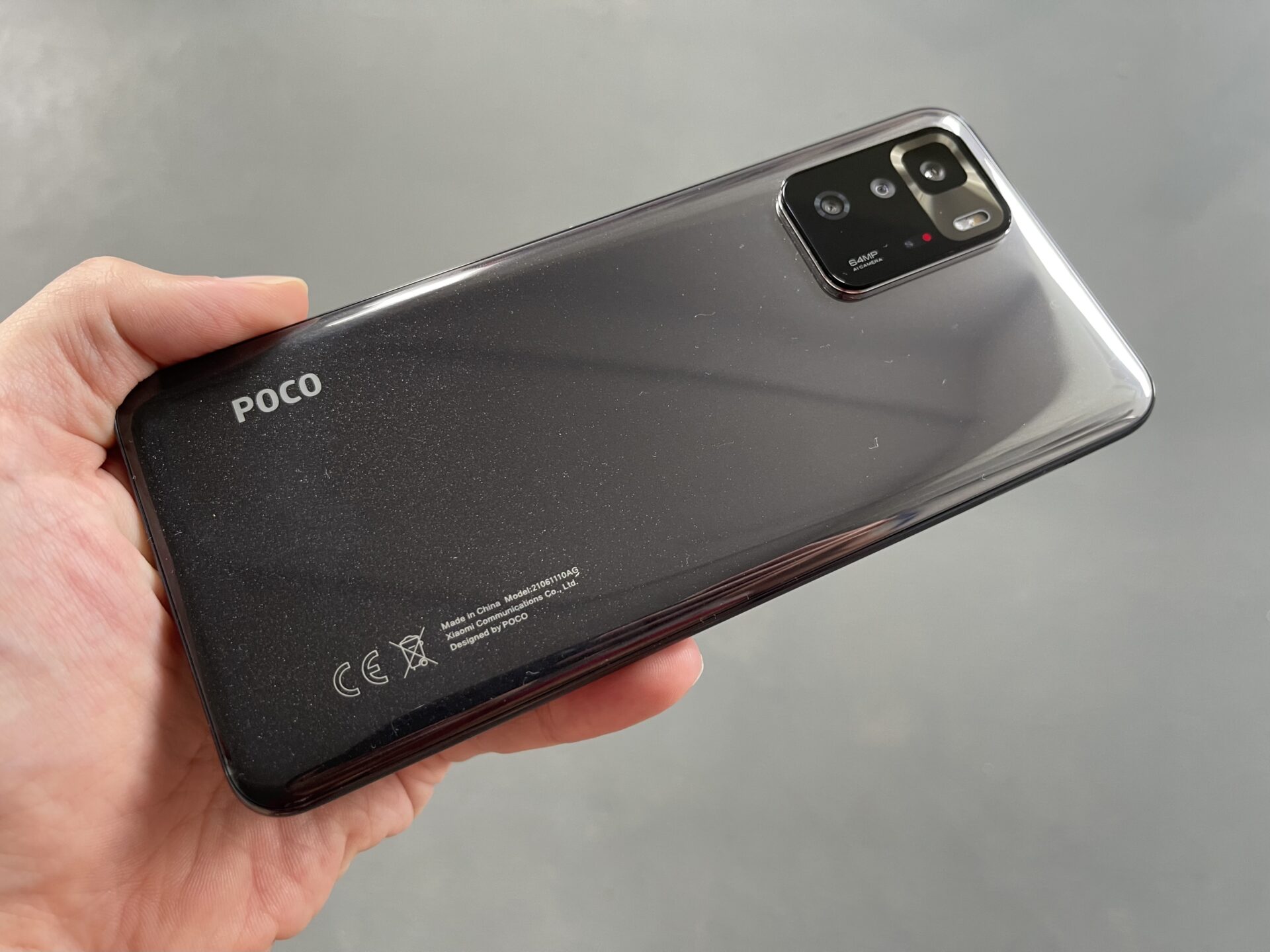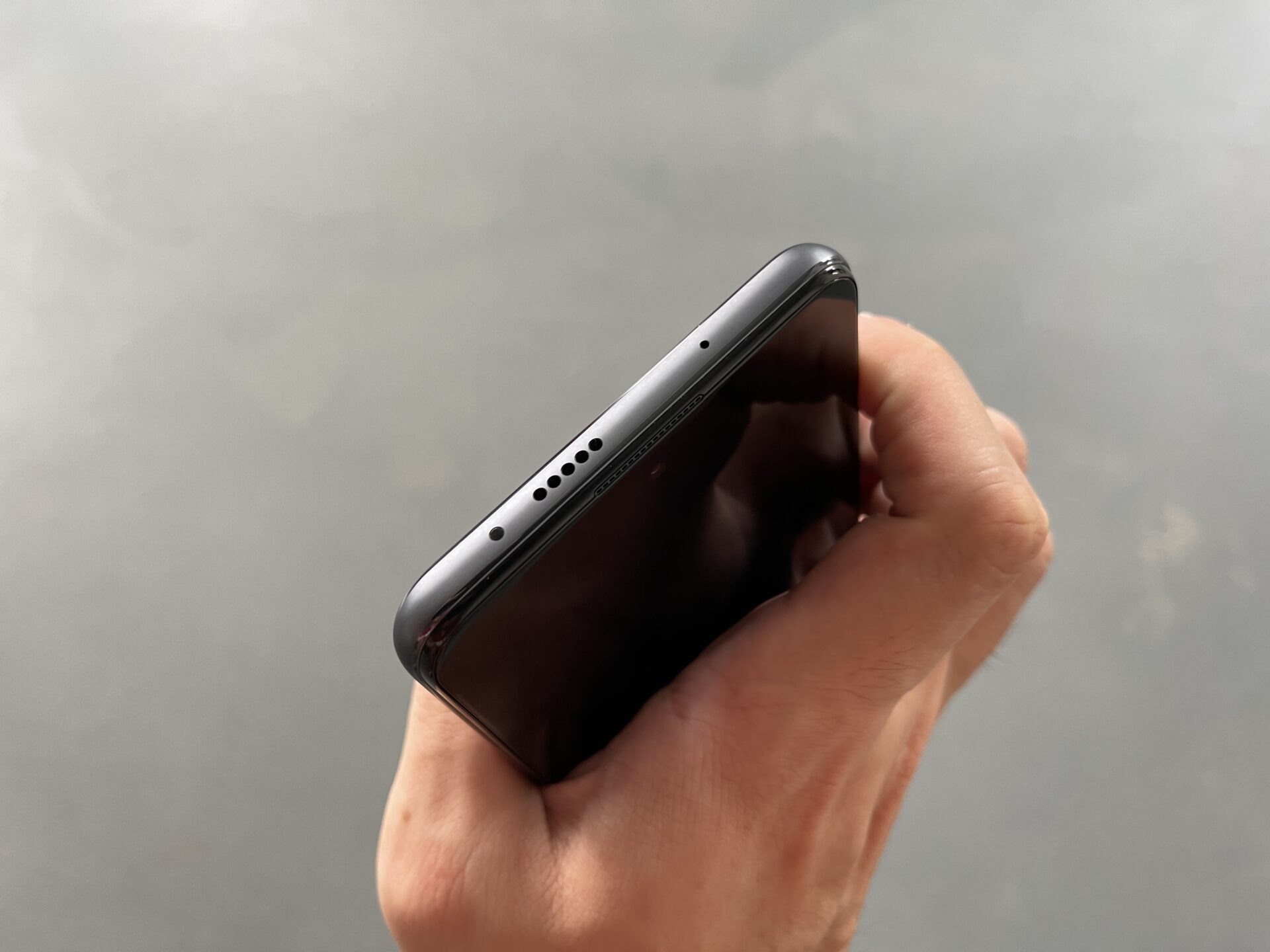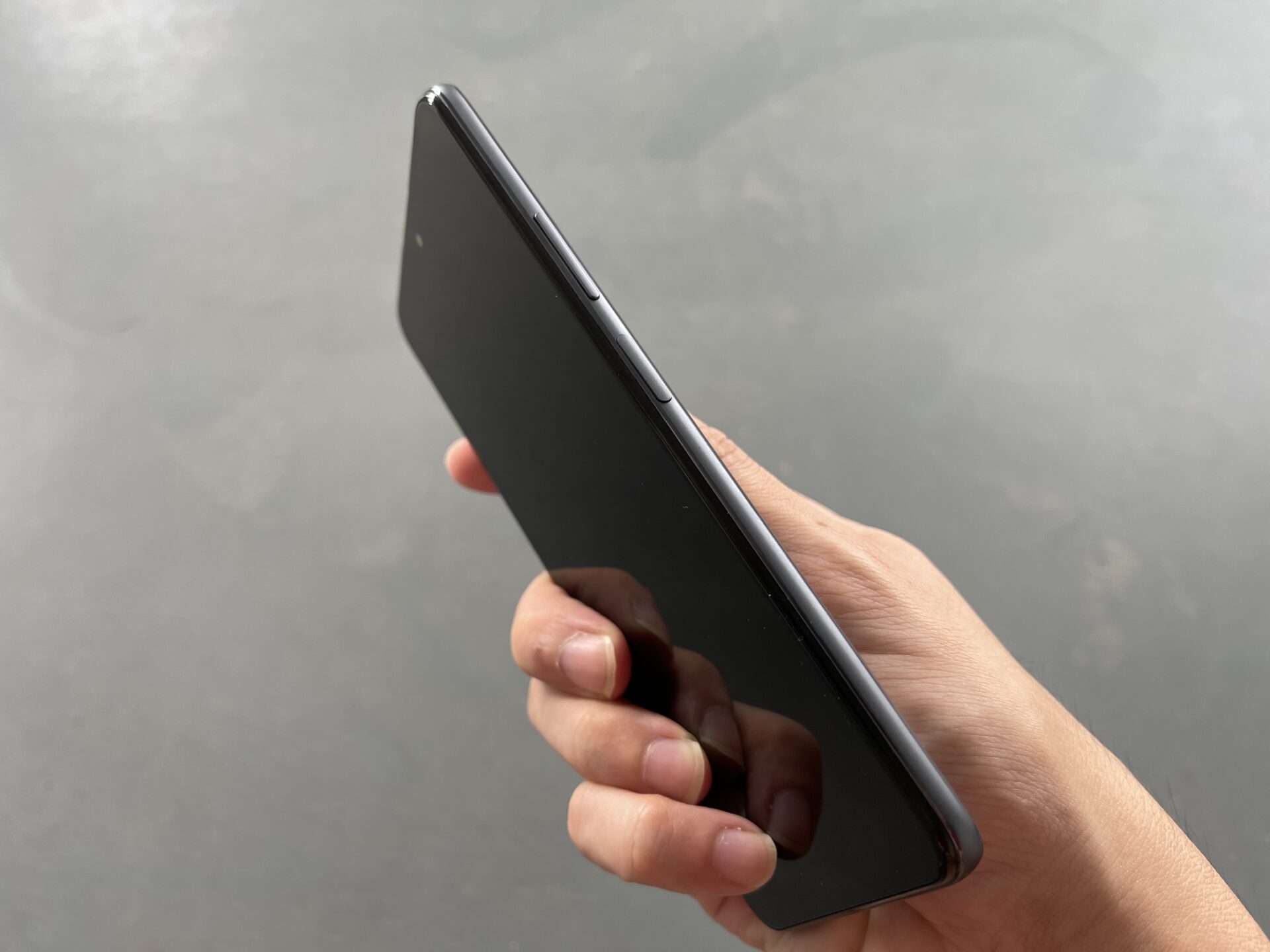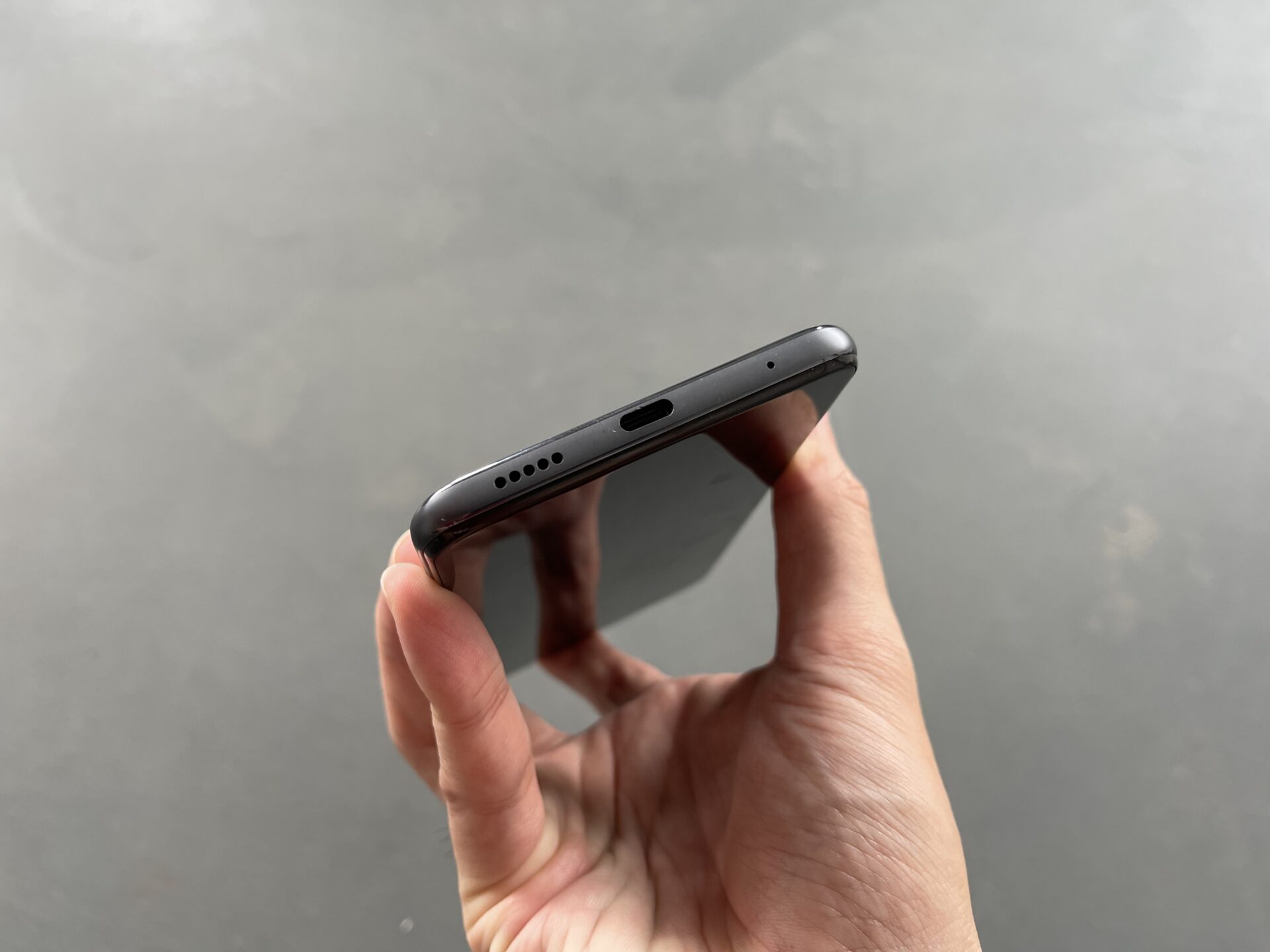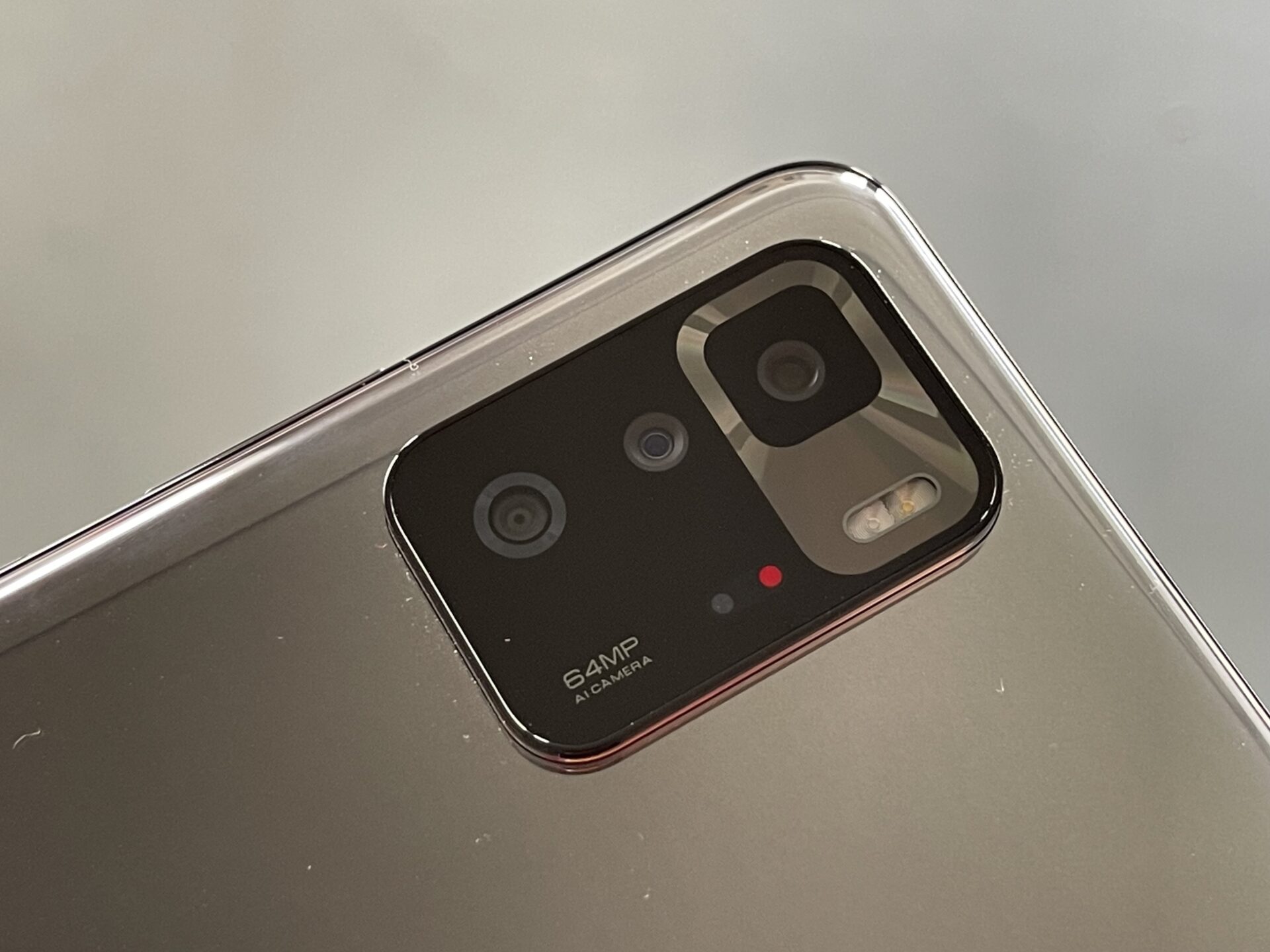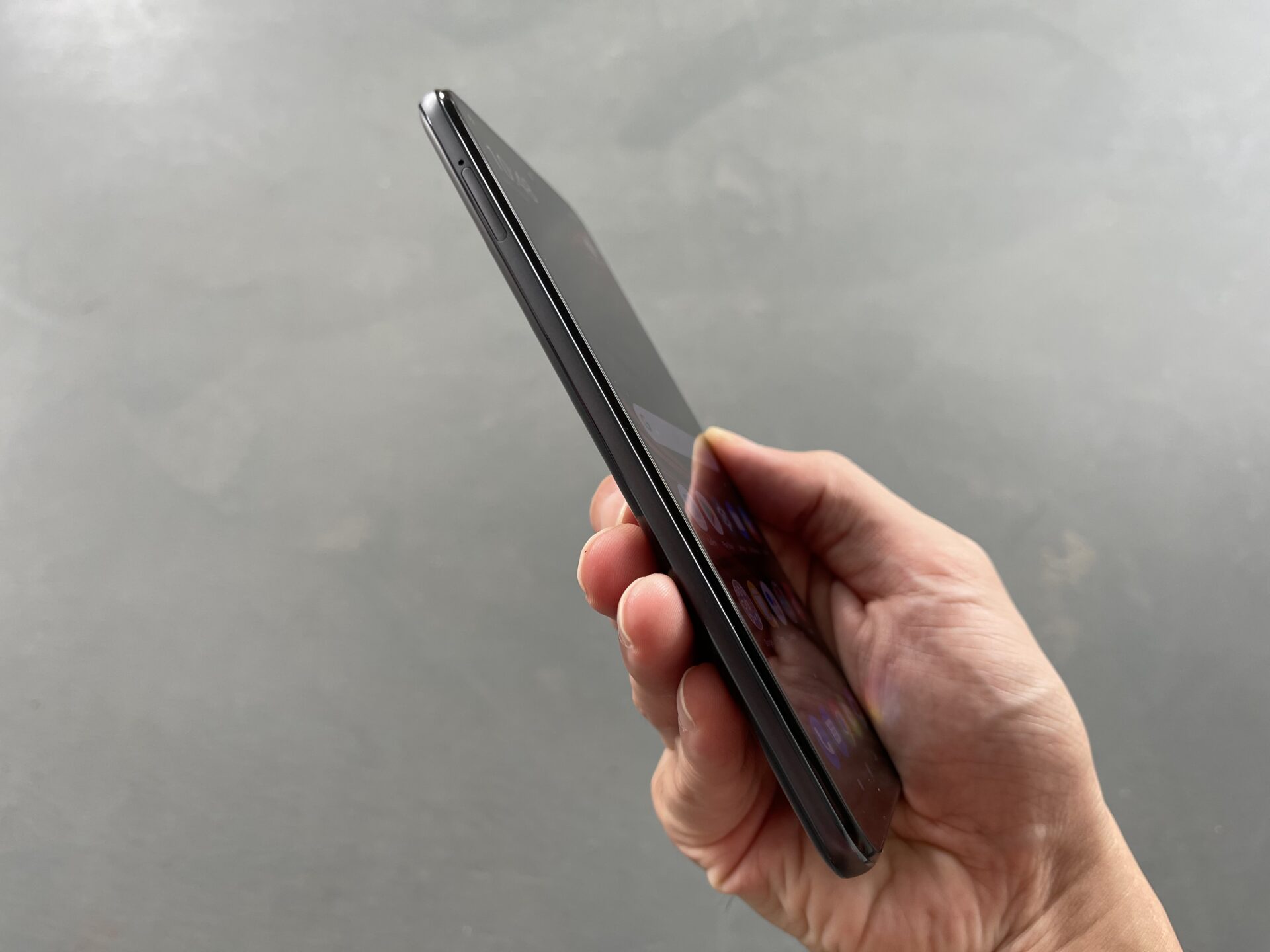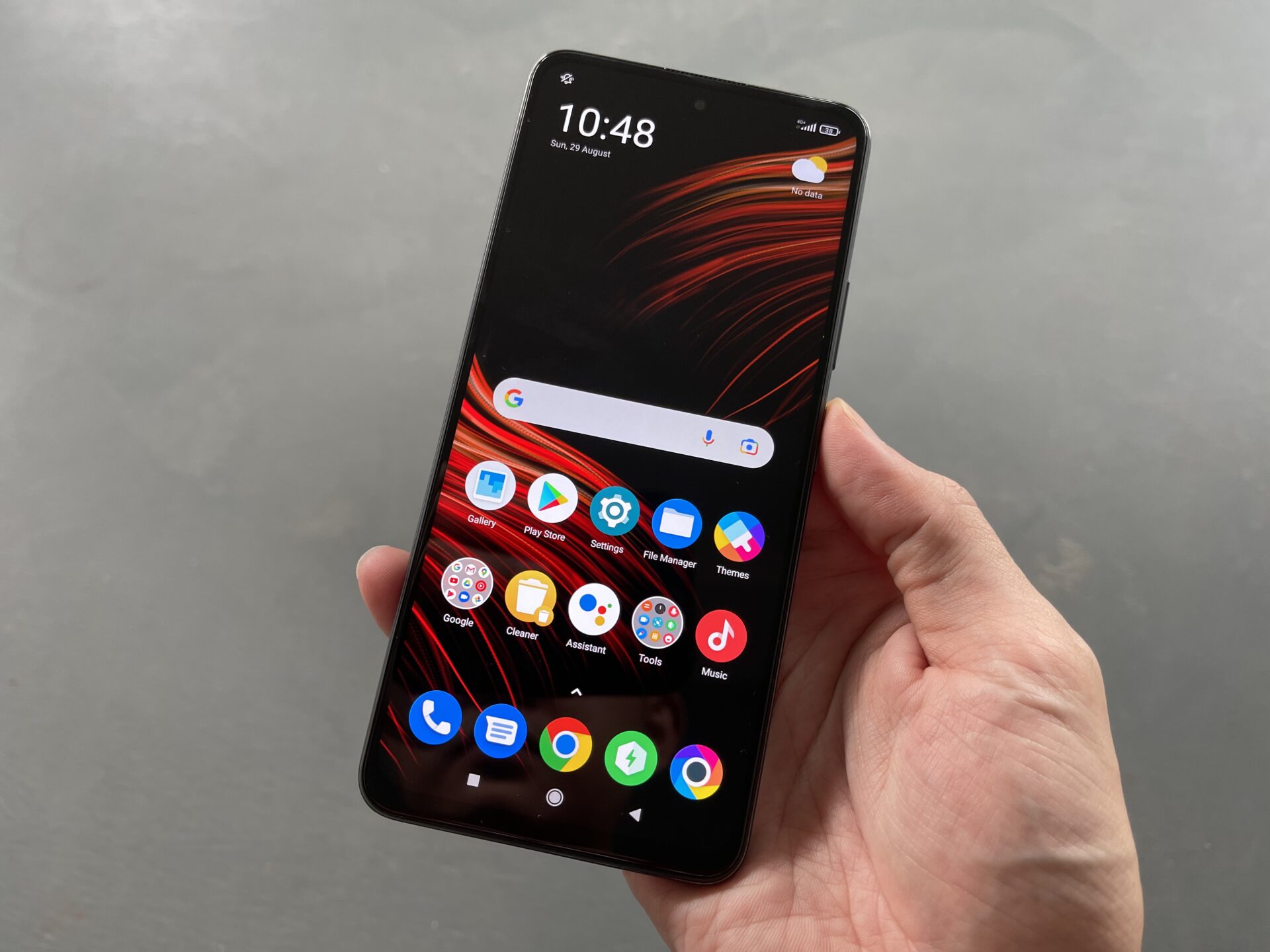
The Xiaomi Poco X3 GT. PHOTO: Esmond Xu
Xiaomi is actively pitching its value flagship sub-brand, Poco, in the Singapore market, and the Poco X3 GT is the second entrant that we are reviewing in recent months.
The Poco line looks to be on a half-yearly refresh cycle, and the X3 GT is the August 2021 entrant after the X3 Pro launched in March this year.
The Qualcomm Snapdragon 860 chip is replaced by a Dimensify 1100 to add 5G support – though both should perform similarly. Both devices have 8GB of LPDDR4 (not DDR5) RAM.
The camera array has also gained a better main lens. While the battery has shrunk slightly to 5,000mAh from 5,180mAh, you can top it up quickly by way of Xiaomi’s 67W fast charge capability (the X3 Pro managed 33W).
The Poco X3 GT is selling at S$429 with 128GB of in-built storage, and S$499 for the 256GB variant on the brand’s Lazada Official Store. As is common on such platforms, flash sales may bring prices down from time to time.
Design and features
Like the Poco F3, the Poco X3 GT is a rebadged Redmi device, in this case a Redmi Note 10 Pro built for the mainland Chinese market.

The Xiaomi Poco X3 GT is the latest from the Poco line aimed at the Singapore market. PHOTO: Esmond Xu
The Xiaomi-esque design language is incredibly familiar. Here, it pairs a rectangular protruding camera module against a glossy curved rear that is great to hold in one’s hand.
Even the obligatory regulatory details are in the same spot. The main change here – The Xiaomi logo silkscreen printed onto the bottom left of the device has been replaced with Poco’s.
One thing is for sure – the smaller prints look much better than the huge Poco emblazoned on the back of the X3 Pro.
Unfortunately, the same complaints with a fingerprint magnet rear continue to apply. The Starglaze Black review unit loaned to us looks pretty as its sparkly paintjob glitters like a clear, starry night when held under light. You will be busily wiping it down after you are done admiring it, however.
Measuring 163.3 x 75.9 x 8.9 mm and weighing 193 grams, the Xiaomi Poco X3 GT is of average build for smart devices today. The body is plastic and there is some flex, especially when I pressed on the middle. Something has to go, and Xiaomi has made a reasonable trade-off.
The Poco X3 GT comes with speakers on the top and bottom of the device, and a volume rocker on with the power button on the right. The speakers are loud, clear and balanced. No complaints there.

There are speakers on both the top and bottom bezels of the Poco X3 GT. PHOTO: Esmond Xu
A fingerprint reader is built onto the power button, like most mid-budget devices. Fingerprint registration took a tad longer due to the smaller sensor, but worked accurately and quickly once done.

Volume rocker adorning the top right of the device, and the power button integrated with a fingerprint sensor below. PHOTO: Esmond Xu
There is neither a headphone jack nor a microSD card reader, unfortunate hallmarks of a sufficiently “flagship” device in recent times. On the bright side, you can choose the amount of built-in storage you desire.
The device is rated for IP53-grade dust and water protection. The Xiaomi Poco X3 GT will survive the occasional splash and rain, but not a dip in the pool. Official protection ratings are not common across mid-budget devices, so this is a plus.
Screen, performance and battery life
The screen here is a 6.6-inch, 20:9 aspect ratio affair, running on IPS LCD technology (not AMOLED like the Redmi Note 10 Pro) with a body-to-bezel ratio of about 85 per cent. To the naked eye, Xiaomi has made the screen bezel as narrow as it can be, especially on a device at this price point.
The joint between the glass and body is not curved like that on the Sony Xperia 1 III, which means the edges are not as nice to the touch. At least, the Gorilla Glass Invictus treatment on the display will offer good protection against drops.

No headphone jacks here, unfortunately. PHOTO: Esmond Xu
Under the sun, the display remains crisp, but its reflectiveness impacts usability. The brightness of the screen feels like it can do with a further boost even with the “sunlight mode” activated. This is supposed to make the screen brighter for daytime use, especially in the tropics, like in Singapore.
There is also rather obvious “pink shift” on our review unit. A slight change of angle is sufficient to cause whites to go off-colour, and for what is displayed on the far end to turn dark.
This may be an isolated case, so do give the device a try in real life and examine the phenomena for yourself.
That aside, the screen has among the widest ranges of refresh rates available. It can dynamically adjust to 30Hz, 48Hz, 50Hz, 60Hz, 90Hz, and 120Hz, depending on use. Such flexibility probably does good things for the Poco X3 GT’s battery life, and is a capability rather uncommon on mid-budget devices.
Performance wise, the device does not disappoint. The MediaTek MT6891Z Dimensify 1100 features eight cores – 4 high-performance Cortex-A78 ones clocked at 2.6GHz, and the other four power-efficient Cortex-A55 ones running at 2GHz.
Beyond the clock speed, the device runs Asphalt 9: Legends admirably. There is some aliasing, though things run smoothly. The experience with the Mali G77 graphics core is rather similar to the Poco F3’s Adreno 650, actually.
The notifications pane can be accessed by pulling down from the top edge of the screen. It takes on a decidedly iOS-esque aesthetic, with two separate panes for notifications and controls.
That is fine, though the fact that a swipe towards the right brings up controls instead of clearing a particular notification can take some getting used to. You can always switch back to the typical Android notifications pane, if you prefer.
In terms of perfomance, the Poco X3 GT will give you no problems with social media feeds and streaming full HD videos. And neither does it struggle when it has to run two apps side by side in dual window mode.
The Xiaomi Poco X3 GT is bundled with a charger that can juice your device at – get this – up to 67 watts. The device also comes with a USB cable that can deliver and insulate for 6A power delivery.
Charging is blazing fast. It may not quite be 42 minutes as marketing materials claim, but the battery easily went from under 30 per cent to full in about the same amount of time.
Battery life is impressive with the MediaTek processor and 5,000mAh power pack. I had nearly 50 percent charge left after a day of reading, watching some videos, and picture taking.
Camera
The Xiaomi Poco X3 GT comes with an upgraded wide lens, stepping up from 48 MP f/1.8 to 64 MP f/1.8. The ultrawide and a specific-use macro lens – usually less preferred to a multipurpose telephoto – remains unchanged. The selfie camera drops to 16 MP, but gains a larger sensor which should deliver better performance.
The Poco F3 which we tested earlier carries a 48 MP f/1.8 wide shooter like the X3 Pro and a very similar ultrawide lens, but has a 5 MP macro lens.

PHOTO: Esmond Xu
Wide: 64 MP, f/1.8, 26mm, 1/1.97″ sensor, 0.7µm pixels, phase detect autofocus
Ultrawide: 8 MP, f/2.2, 120˚, 1/4.0″ sensor, 1.12µm pixels
Macro: 2 MP, f/2.4
Selfie: 16 MP, f/2.5, 1/3.06″ sensor, 1.0µm pixels
Overall, image quality on the wide lens is good in the day and night, while daytime ultrawide shots are much better than its brethren captured in low light.

The macro lens is capable of producing vibrant colours and good quality, but only at a very limited focal length and with a pair of steady hands. PHOTO: Esmond Xu

The macro lens is capable of producing vibrant colours and good quality, but only at a very limited focal length and with a pair of steady hands. PHOTO: Esmond Xu

Decent shot by the ultrawide lens in the day with nothing overexposed, if a little dull. There is slight loss of detail in the leaves against the backdrop of the sky. PHOTO: Esmond Xu

This shot by the wide lens is vibrant and sharp.

The 2x zoom shot appears over-sharpened, as it has to be up-sampled from the wide shot in the absence of a native zoom lens. PHOTO: Esmond Xu

Another good shot by the wide shooter. The difference an improved lens makes is tangible. PHOTO: Esmond Xu

This ultrawide shot is better than the earlier one, with loss of quality limited to the corners of the shot. PHOTO: Esmond Xu

This ultrawide night shot shows the limits of its smaller aperture and sensor. The image is grainy and muddy despite having HDR and night mode on. PHOTO: Esmond Xu

This shot by the wide lens in the same conditions is much sharper. It does not take in enough light to render details on the tree and leaves, but is usable. PHOTO: Esmond Xu

This ultrawide capture looks alright at first glance, but the Night Mode image processing algorithm compensated for the lack of input by rendering details mushily. PHOTO: Esmond Xu

The wide shot is much sharper and brighter in comparison, no complaints here for a mid-budget device. This shot is taken with Night Mode running, which typically produces better results, but requires an extra 2 to 3 seconds to get the multiple images it needs for the algorithm to do its work. PHOTO: Esmond Xu

I spent a fair bit of time trying to get a good macro shot of the leaf under bright, warm fluorescent walkway light at night, but failed. This shows how the macro shooter here is worse than that in the F3, and emphasises how “boutique” lenses can have limited mileage. PHOTO: Esmond Xu
Conclusion
The Xiaomi Poco X3 GT is a good device overall. The battery life and charging speed are phenomenal, and the main and ultrawide shooters deliver decent results for the price. Just avoid the ultrawide lens at night.
MediaTek processors typically play second fiddle to the Qualcomms, but the Dimensify 1100 in the Poco X3 GT feels quicker than other low-midrange options.
What would hold me back is the screen, which frankly is sharp and crisp, but is handicapped by its reflectiveness. A matte screen protector may go some way in resolving this, but there is no helping the “pink shift”, which I potential buyers should look out for.
Ultimately, tradeoffs are to be expected at this price point. If you can look past (pun intended) the viewing angles, the Poco X3 GT will make an affordable, decent 5G-ready device for enthusiasts.
It’s also a good option for those who need the assurance their device can handle all day-to-day tasks with aplomb, without costing a bomb.
